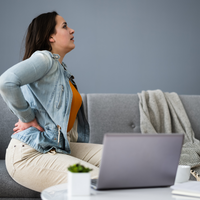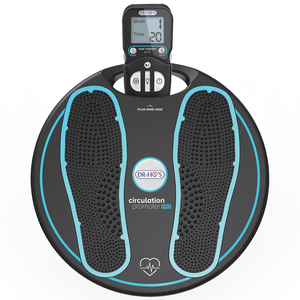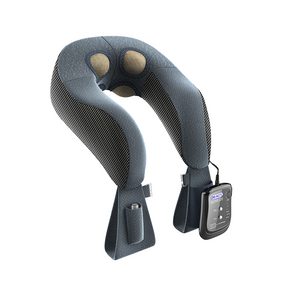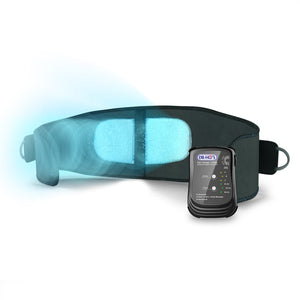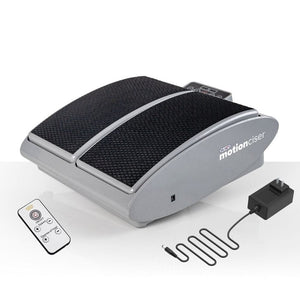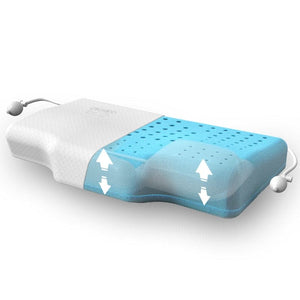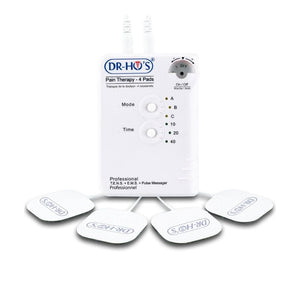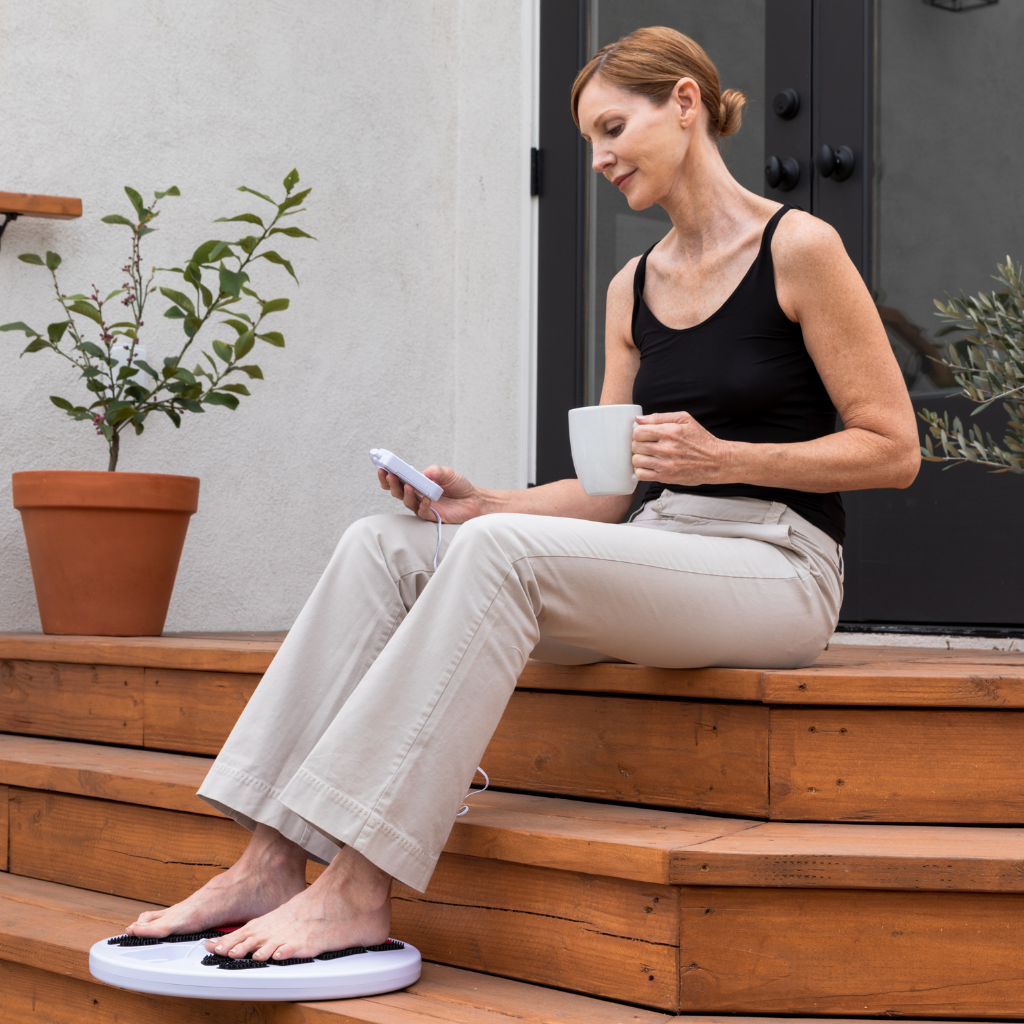Managing a circulation problem can be a long journey full of uncertainties and obstacles. As a result, those dealing with symptoms should know if there is a treatment for poor circulation in the hands and feet. If you have found yourself wondering “what is causing my poor circulation?”, and are looking for options, you’ve come to the right place.
Keep reading to find answers to questions you may have about poor circulation in the hands and feet; we’ll cover causes, symptoms and most importantly, methods for finding relief from your symptoms!
What Does Poor Circulation in the Hands and Feet Feel Like?
First and foremost, let’s identify the symptoms of a circulation issue. If you’ve been experiencing changes or pain and discomfort in your hands and feet, you may be dealing with a circulatory issue. Individuals with circulation problems often experience symptoms including:
- Changes in skin colour: Bluish or purplish hands and/or feet
- Numbness or tingling
- Swelling
- Temperature changes: Hands and/or feet that feel cold to the touch
- Changes in mobility: Difficulty moving fingers and/or toes
- Fatigue
- Visible varicose veins
No two people will have the exact same experience with poor circulation in the hands and feet. For some, it’s a mild nuisance, for others, it impacts many aspects of their lives including their work, social life and more.
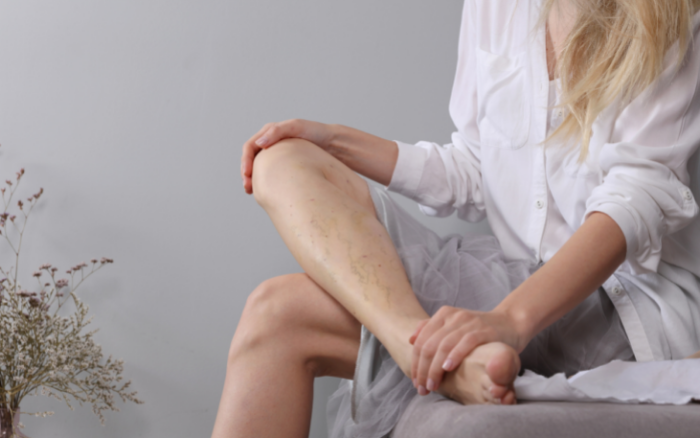
Why is Proper Circulation So Important?
Your circulatory system plays a major role in your overall health and wellbeing. Here’s why it’s so important: the circulatory system transports blood, oxygen and nutrients throughout the entire body, providing your organs with the tools they need to work properly. Proper circulation is especially critical for brain, heart, lung and muscle function.
Circulation also plays a key role in the health of your immune system; the circulatory system transports white blood cells all around the body in order to fight off disease and infection. That being said, it’s clear why symptoms of poor circulation should not go ignored, and why it’s important to find a treatment for poor circulation in the hands and feet.
What Causes Poor Circulation?
Some of the most common risk factors for experiencing poor circulation in the hands and feet include smoking, age and obesity. Most notably, sitting for long periods of time has been linked to impaired blood circulation.
There are also a variety of underlying conditions that can be related to poor circulation. Always consult your preferred healthcare professional for a diagnosis. These conditions include:
- Atherosclerosis: This condition develops as a result of plaque buildup in the blood vessels or arteries. As these pathways narrow, it becomes more difficult to circulate blood.
- Diabetes: Individuals with diabetes are susceptible to damaged blood vessels due to high blood glucose levels, leading to poor circulation.
- Anemia: Iron deficiency can often lead to anemia, a lack of red blood cells in the body.
- Raynaud’s Disease: Narrowed blood vessels due to Raynaud’s Disease can lead to chronically cold hands and/or feet.
- Blood clots: These are clumps of blood that do not dissolve on their own, causing pain and swelling.

Is There a Treatment for Poor Circulation in The Hands and Feet?
There are viable, accessible methods out there for improving circulation in the hands and feet. But as great as that may seem, it can actually be quite difficult to narrow them down and find something that really works for you. In order to help you find meaningful pain relief methods to add to your pain management routine, we’ve outlined our top four treatments for poor circulation in the hands and feet.
1. Get Moving Regularly
When you’re in pain, exercising is probably the last thing you want to do. But getting over this initial hump and finding physical activities that you truly enjoy can help you develop this healthy habit. Getting regular exercise is one of the most meaningful things you can do for your overall health and wellbeing. And for those dealing with poor circulation in the hands and feet, exercise is especially important as it contributes to your cardiovascular health and gets your heart pumping! High-intensity workouts specifically are optimal for getting your blood flowing. This can include the following kinds of exercise:
- Running or jogging
- Jumping rope
- Biking and rollerblading
- Aerobic exercise such as kickboxing and dancing

For those looking for lower-intensity activities, try the following instead:
- Practicing yoga
- Swimming
- Gardening
- Hiking
Any of the above exercises can help improve your overall health and especially your circulation, regardless of your preferred intensity level. Plus, all of these exercises can make for fun, social hobbies!
2. Try TENS & EMS for Circulation
TENS (Transcutaneous Electrical Nerve Stimulation) and EMS (Electrical Muscle Stimulation) can offer temporary relief for those dealing with painful symptoms related to circulation.
TENS is a form of pain therapy that is found in DR-HO’S devices such as the Circulation Promoter, which is specifically designed for use on the feet and lower limbs. It helps temporarily relieve pain associated with sore and aching foot and leg muscles and helps temporarily increase local blood circulation. If that’s not enough, the Circulation Promoter is designed to feel like a soothing, hands-on massage, with sensations that feel like kneading, chopping and rubbing.

The conductive footpads are divided into sections to better target different areas in the soles of the feet, with DR-HO’S conductive pads in the heel and arch areas to provide more consistent, comfortable and soothing stimulation. These footpads are engineered to pass gentle TENS, EMS and AMP stimulations from the Pain Therapy device to the body. Learn more about these three pain therapies:
TENS Therapy: Gently stimulates the nerves to help reduce pain signals sent to the brain and provide temporary relief of pain. Additionally, TENS therapy is thought to aid in the release of endorphins — a naturally occurring chemical that may also provide temporary pain relief.
EMS Therapy: EMS gently stimulates healthy muscles, causing them to contract and relax in order to increase local circulation and soothe soreness. Stimulating healthy muscles also helps improve and facilitate muscle performance.

AMP Technology: A proprietary technology that provides over 300 different stimulations that vary in wavelength, frequency and rest periods. These stimulations are programmed to automatically change, so you get a soothing variety of pulses.
You have the power to get targeted, deep, penetrating pain therapy with DR-HO’S! And you can use it several times a day to help relieve your pain.
Curious about TENS & EMS for circulation? Learn more here:
3. Massage The Affected Areas
Massage therapy can be an effective pain relief method for those dealing with poor circulation. Not only does massage help soothe pain and soreness, but it can also be incredibly relaxing. Those who deal with pain are also often managing stress, and stress in turn can worsen pain. Address both of these issues with an invigorating massage. You should also consider trying massage therapy for the following benefits:
- Improving circulation and alertness
- Lowering heart rate and blood pressure
- Improving immune function
- Reducing muscle soreness and stiffness
Massage therapy encompasses a wide variety of styles and techniques, so you can always work with your massage therapist of choice to find what feels best for you!

4. Try Compression for Improved Circulation
Compression is a pain relief method that can be beneficial for those dealing with poor circulation in the legs and/or feet specifically. Compression socks and stockings are very snug-fitting articles of clothing that will gently squeeze your feet and legs. They work to compress your blood vessels so that your arteries can relax and blood can flow more easily.
Many of those who deal with poor circulation in the lower limbs will find that as they go about their day, their swelling, pain and other symptoms worsen. In addition to improving local circulation, compression socks and stockings can also reduce this swelling and discomfort that often accompanies circulatory issues. What’s more, compression socks and stockings can help to prevent further circulatory problems such as blood clots.

Take steps today to feel better tomorrow.
We hope that our recommended treatments for poor circulation in the hands and feet help you discover new ways to look at and manage your symptoms. Use these practical tips in your daily routines to improve circulation, so you can do the things you love again!
Learn More About Circulation on the DR-HO'S Blog!
How Does a TENS & EMS Foot Massager Work?
Why the Circulation Promoter is an Excellent Foot & Leg Massager for Pain Sufferers
How Does DR-HO’S Circulation Promoter Work to Temporarily Relieve Pain?
7 Common Signs of Poor Circulation
The Circulation Promoter Product Guide
EMS Foot Massagers: Frequently Asked Questions About EMS
Ankle Pain Relief: How to Deal With Different Types of Ankle Pain

